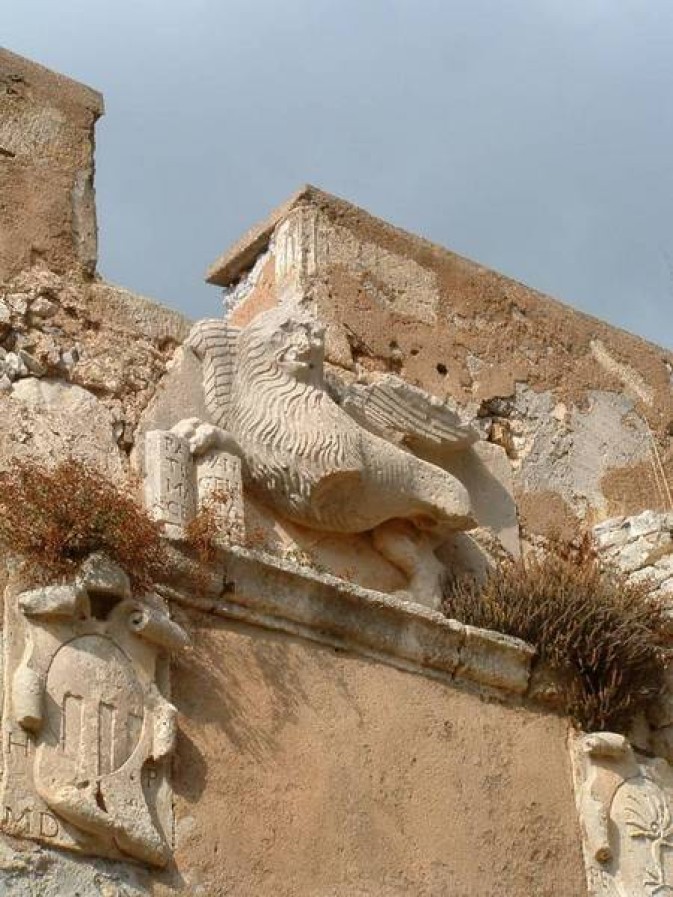Lion of St Mark Kato Hora
Lion of St Mark
The winged lion of St Mark, the Evangelist, protector of Venice, was the emblem of the Most Serene Republic. Beyond the city itself the lion was used in a variety of ways in all areas under Venetian dominion. The emblem of the lion is depicted in Nafplion and Crete on Venetian buildings and fortifications. Carved in marble or local limestone, they crowned the gateways and major sections of fortifications and public buildings. There were three main types of representation:
a. The lion depicted looking straight at the observer (gardant), its body doing a three quarter turn, moving either right or left with wings spread over its head. This type of representation was particularly common in the 14th and 15th centuries.
b. The lion is depicted side-on, in motion with its wings spread back and a closed or open inscribed gospel between its front paws. The closed gospel indicates a time of trouble and an open gospel a time of peace at the time of construction.
c. The lion is depicted frontally, with the main emphasis on the head, which is surrounded by raised wings. This type is known as ‘in soldo’ or ‘in gazzetta’, after the type of coin on which it usually appeared, or ‘in molleca’ on account of its resemblance to a crab.
In all versions, particularly in later examples, the lion is depicted as vigorous and arrogant, radiating strength and confidence, while its highly intense form is increasingly anthropomorphic.
In areas of Ottoman occupation the face of the lion has been defaced, particularly on Crete.
Peter Makarthis
